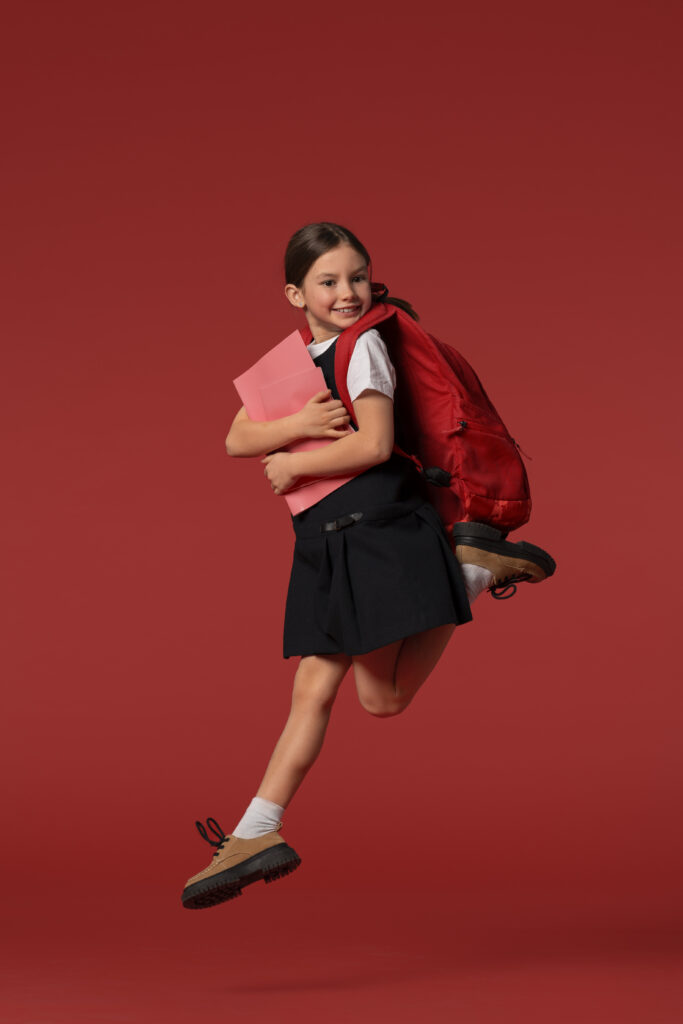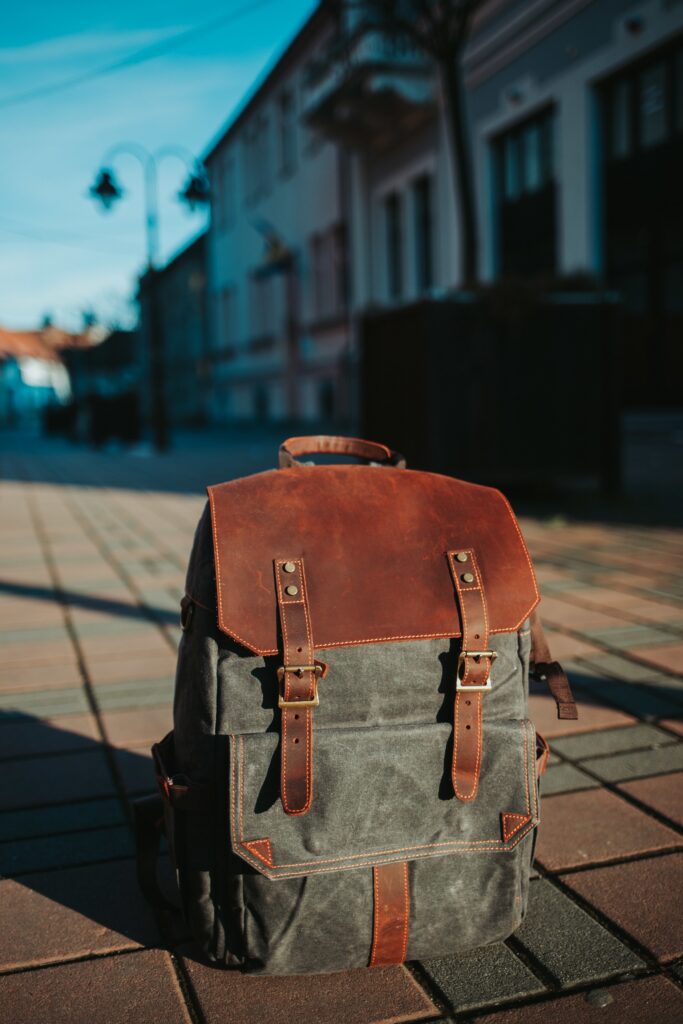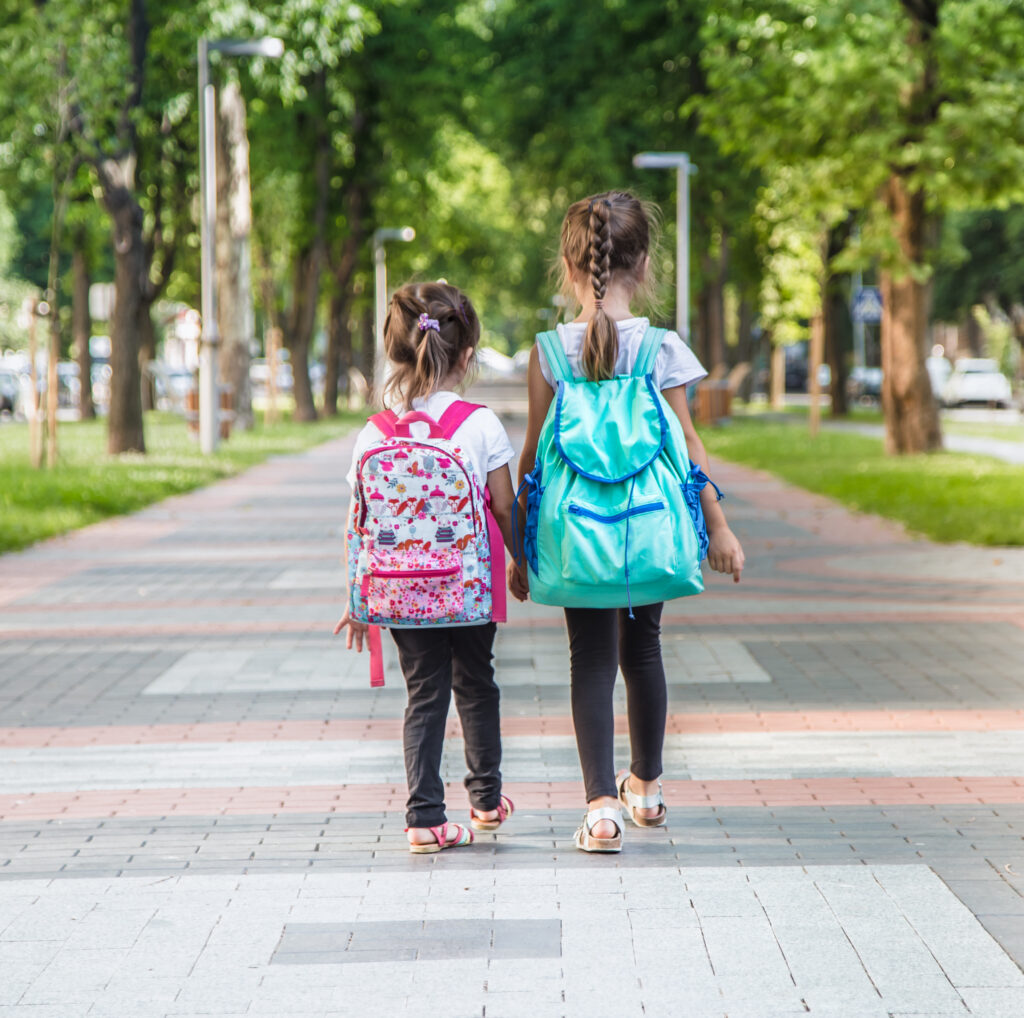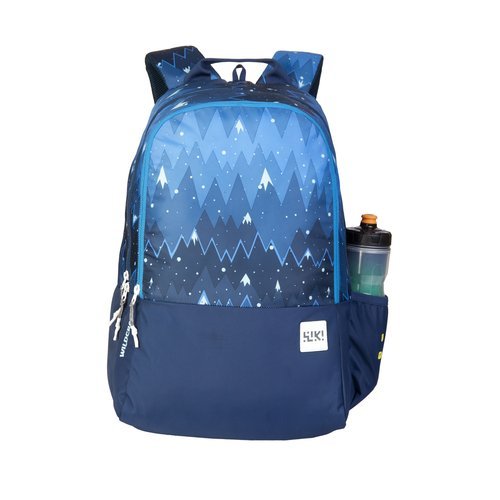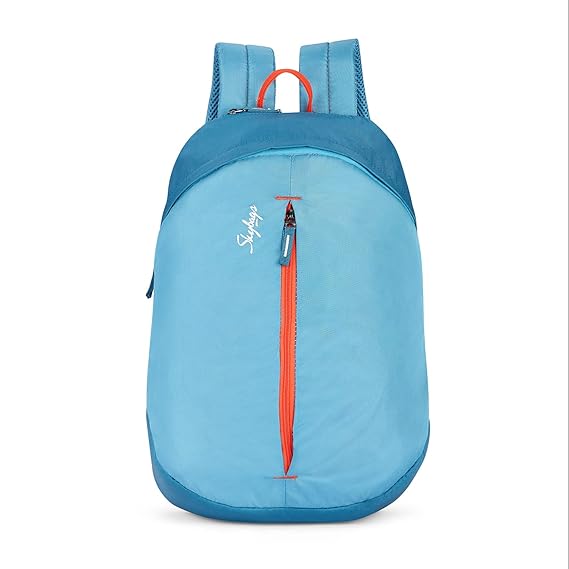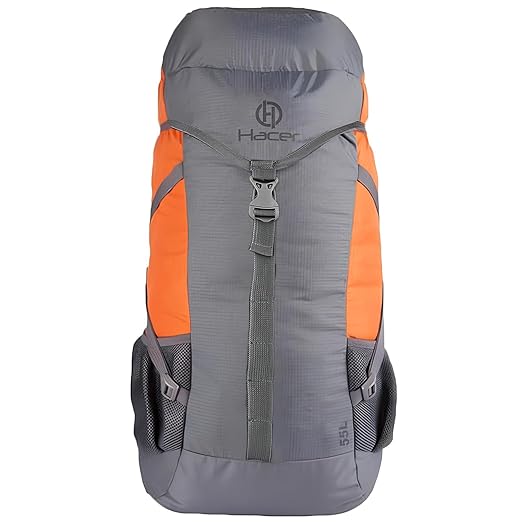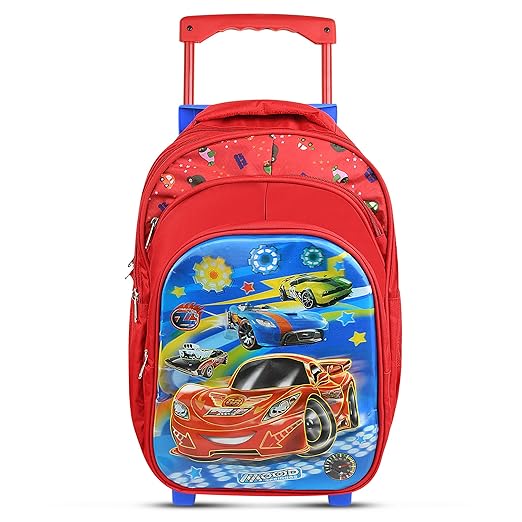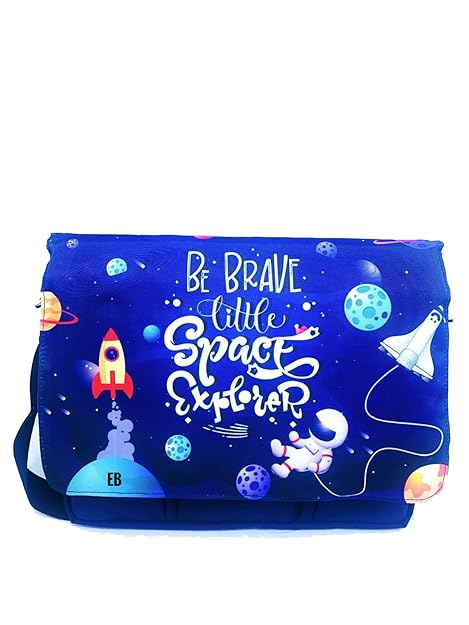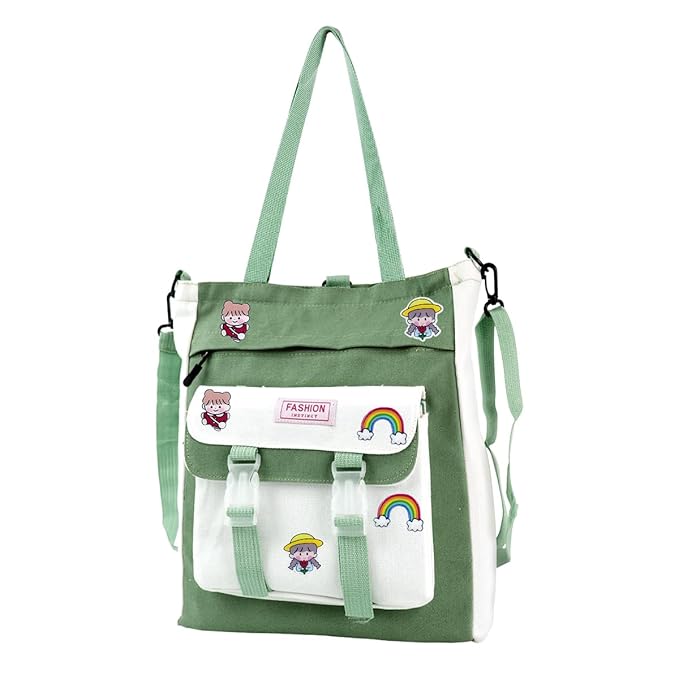A school bag is more than just a carrier for books and supplies; it’s a student’s constant companion throughout their academic journey. From kindergarten to college, the right school bag can make a significant difference in a student’s comfort, organization, and even their style. However, with a myriad of options available, navigating the world of school bags can be overwhelming. Fear not! In this comprehensive guide, we’ll delve into everything you need to know to find the perfect school bag that suits your needs, preferences, and lifestyle. Whether you’re a parent shopping for your child or a student seeking a functional and stylish backpack or messenger bag, we’ve got you covered. So, let’s dive in and discover the ideal school bag that will carry you through your educational adventures with ease and flair.
A “school bag” is a type of bag or backpack specifically designed for students to carry their books, notebooks, stationery, and other school supplies. It’s typically worn on the back and often features multiple compartments or pockets to help organize and carry various items needed for school. School bags come in a variety of styles, sizes, and designs to cater to different age groups, preferences, and functional needs of students. They are essential accessories for students of all ages, from elementary school to college, helping them transport their belongings conveniently and comfortably while commuting to and from school.
Table of Contents
"Evolution of School Bag" over time
The evolution of school bags reflects changes in educational practices, fashion trends, technology, and societal norms over time. Here’s a brief overview of how school bags have evolved:
Early Years:
In ancient times, students often carried their scrolls or tablets in satchels made of animal skins or woven materials. During the Middle Ages, students carried their books and writing materials in leather satchels or cloth bags, often slung over their shoulders.
Industrial Revolution:
With the rise of mass education in the 19th century, school bags became more standardized and practical. Leather and canvas became popular materials for school bags due to their durability and strength.
20th Century:
In the early 20th century, leather satchels with shoulder straps or metal buckles were common among students. As education became more accessible and diverse, the design of school bags evolved to accommodate different needs, such as larger compartments for textbooks and notebooks.
Mid to Late 20th Century:
The introduction of nylon and other synthetic materials in the mid-20th century revolutionized school bag design, making them lighter and more water-resistant. Backpacks emerged as a popular choice among students for their practicality and ability to distribute weight evenly.
21st Century:
The digital age brought about changes in school bag design to accommodate laptops, tablets, and other electronic devices. Tech-friendly features such as padded compartments and built-in charging ports became common in school bags.
Environmental concerns led to the rise of eco-friendly materials and sustainable manufacturing practices in school bag production.
Present Day:
School bags continue to evolve with advancements in materials, technology, and design. Customization options such as personalized embroidery, colorful patterns, and pop culture references allow students to express their individuality. Ergonomic designs prioritize comfort and minimize strain on students’ backs and shoulders, promoting overall well-being.
Overall, the evolution of school bags reflects a blend of functionality, fashion, and innovation, adapting to the changing needs and preferences of students throughout history.
Environmental concerns led to the rise of eco-friendly materials and sustainable manufacturing practices in school bag production.
"The importance of a school bag "
It lies in its functionality, practicality, and role in supporting a student’s academic journey. Here are some key reasons why school bags are essential:
Organization: School bags provide students with a dedicated space to organize and carry their books, notebooks, stationery, and other essentials needed for their classes. This organization helps students keep track of their materials and ensures they have everything they need for their studies.
Convenience: Carrying a school bag allows students to transport their belongings safely and conveniently, whether they’re commuting to school, moving between classes, or studying in different locations. A well-designed school bag makes it easy for students to carry everything they need without feeling burdened or uncomfortable.
Comfort: Properly fitting school bags with padded straps and ergonomic designs distribute weight evenly, reducing strain on the shoulders and back. This comfort is crucial for students who may have to carry heavy loads throughout the school day.
Protection: School bags offer protection for valuable items such as laptops, tablets, and textbooks, shielding them from damage caused by bumps, falls, or adverse weather conditions. Additionally, specialized compartments and padding help safeguard electronic devices and fragile items.
Essential Features of the Perfect School Bag
Size Matters: Considerations for Carrying Capacity
Assessing the appropriate size and capacity based on grade level, daily activities, and storage needs.
Spacious Compartments: A school bag should have multiple compartments and pockets to efficiently organize books, notebooks, stationery, electronic devices, and other essentials.
Padded Straps and Back Support: High-quality school bags come with padded shoulder straps and back panels to distribute weight evenly and provide comfort during prolonged wear.
Durable Construction: School bags should be constructed from durable materials such as nylon, polyester, or canvas to withstand the rigors of daily use and ensure longevity.
Ergonomic Design: An ergonomic design ensures that the school bag conforms to the body’s shape, reducing strain on the back and shoulders and promoting proper posture.
Water-Resistant Exterior: A water-resistant exterior protects belongings from rain and spills, keeping contents dry and safe. Opting for water-resistant or weatherproof materials to keep belongings dry and protected from rain or spills.
Reflective Details: Reflective details enhance visibility in low-light conditions, ensuring safety for students who walk or bike to school.
Tech-Friendly Options: Considering Electronic Device Storage (Laptop/Tablet Compartment): For students who use electronic devices for learning, a dedicated laptop or tablet compartment with padding provides protection and easy access.
Side Pockets: Convenient side pockets are useful for carrying water bottles, umbrellas, or small snacks, keeping them easily accessible.
Organizational Features: Additional organizational features such as pen loops, key clips, and interior pockets help keep smaller items organized and readily available.
Easy Maintenance: Ensuring Longevity with Care and Cleaning
Checking for easy maintenance and cleaning instructions to prolong the life of the school bag.
Budget-Friendly Options: Finding Value without Compromise
Balancing quality and affordability by considering budget-friendly options that meet essential criteria without sacrificing functionality or durability.
Personalization Options: School bags often come in a variety of colors, patterns, and designs, allowing students to express their individuality and personal style.
A school bag with these essential features ensures that students can carry their belongings comfortably, safely, and efficiently throughout their academic endeavors.This comprehensive guide highlights key factors to consider when choosing the perfect school bag, ensuring students are equipped with a practical, comfortable, and stylish accessory to support their academic journey.
Choosing the right school bag is an investment in a student’s educational experience and overall well-being.
"Fitting Your Convey: How Various Kinds of School Sacks Take special care of Individual Requirements and Inclinations".
School Bag Backpacks: Backpacks are versatile and practical, offering multiple compartments and pockets for organization, padded straps for comfort, and ergonomic designs for even weight distribution. They are ideal for students who prefer hands-free carrying, need to transport heavy loads, or require storage for electronic devices and school supplies.
"Exploring School Bag Backpack Diversity: A Guide to Different Styles and Designs"
1. Wildcraft Standard Backpacks: A classic example of a standard backpack with a spacious main compartment, front utility pocket, and padded shoulder straps. It’s ideal for everyday use, school, work, or travel. Known for its minimalist design and durable construction, this backpack features a signature striped fabric liner, front storage pocket, and adjustable shoulder straps.
2. Skybags Daypack: Designed for outdoor adventures, this hiking pack features a large main compartment, hydration sleeve, and padded back panel for comfort. It’s suitable for day hikes, camping trips, or outdoor excursions.
3. Hacer 55 Litre Backpack: An example of a larger hiking pack with a capacity of 55 liters, this backpack offers ample storage space, multiple compartments, and adjustable suspension for carrying heavy loads comfortably.
4. Stylebase Rolling Backpacks: Combining the convenience of a backpack with the ease of rolling luggage, this backpack features a retractable handle and corner-mounted wheels for smooth rolling. It’s perfect for students who need to transport heavy loads without straining their backs. Known for its durability and functionality, this rolling backpack offers ample storage space, padded laptop sleeves, and smooth-rolling wheels for easy maneuverability. It’s suitable for travel, school, or business trips.
5. Echo Boomers Messenger School Bag: Messenger bags provide easy access to belongings with a single shoulder strap, flap closure, and adjustable buckles. They offer a more casual and urban aesthetic compared to backpacks, making them suitable for students who prioritize style and quick accessibility over carrying capacity.
6. Palay Tote Bag: Tote bags are simple and spacious, featuring open-top designs, sturdy handles, and lightweight materials. They are perfect for students who prefer simplicity, versatility, and easy access to their belongings. Tote bags are also popular among students who need to carry larger items such as gym clothes, art supplies, or lunch boxes.
Overall, the diverse range of school bags available ensures that students can find the perfect option to meet their individual needs, whether they prioritize comfort, organization, style, or mobility. By offering a variety of features and designs, different types of school bags cater to the varying preferences and lifestyles of students, ensuring they can carry their belongings comfortably and confidently throughout their academic journey.
Bag of Personality: Customization and Personalization Options for Your School Bag
Make your school bag uniquely yours with these fun and creative customization options, adding flair and personality to your everyday accessory.
- Patch Perfect: Express Yourself with Unique Patches
Add patches featuring your favorite bands, characters, or hobbies to showcase your interests and personality.
Monogram Magic: Personalize with Your Initials or NameEmbroider your initials or name on your school bag for a classic and personalized touch.
DIY Delight: Get Crafty with DIY DecorationsGet creative with fabric paints, markers, or iron-on transfers to design your own unique patterns or artwork.
Pin It Up: Decorate with Colorful Pins and ButtonsCustomize your school bag with an assortment of pins and buttons, expressing your individuality with every addition.
Statement Straps: Swap Out for Vibrant or Patterned StrapsSwitch out your standard shoulder straps for vibrant or patterned ones to add a pop of color and style to your bag.
Embrace your creativity and make your school bag stand out from the crowd with these personalized and customizable options.
Maintenance and Care Tips for Your School Bag
Keep your school bag in top shape with these essential maintenance and care tips, ensuring it stays durable, clean, and ready for action.
Cleaning Instructions:
Regularly spot clean your school bag with a damp cloth and mild detergent to remove dirt and stains.
For deeper cleaning, hand wash your bag with gentle soap and lukewarm water, avoiding harsh chemicals or bleach.
Allow your bag to air dry completely before using or storing it to prevent mold or mildew growth.
Repairing Minor Damages:
Check your school bag regularly for signs of wear and tear, such as loose stitches, broken zippers, or worn-out straps.
Repair minor damages promptly using a needle and thread, zipper repair kit, or adhesive patches to prevent further deterioration.
For more extensive damages, consider professional repairs or replacements to maintain the integrity of your bag.
Storing the Bag Properly:
When not in use, store your school bag in a cool, dry place away from direct sunlight and moisture to prevent discoloration or damage.
Empty out the contents of your bag and gently reshape it to maintain its structure and prevent creases or wrinkles.
Avoid overloading or compressing your bag during storage to preserve its shape and extend its lifespan.
With these maintenance and care tips, you can keep your school bag looking and performing its best, ensuring it remains a reliable companion throughout your academic journey.
School Bag Safety Tips for Students:
Choose the Right Size: Select a backpack appropriate for your size and needs. Avoid oversized bags that can lead to overpacking and strain.
Proper Weight Distribution: Distribute weight evenly by packing heavier items closer to your back and lighter items towards the front. Aim to keep the weight of the backpack no more than 10-15% of your body weight.
Wear Both Straps: Always use both shoulder straps to distribute weight evenly and prevent strain on one side of the body. Adjust the straps to fit snugly against your shoulders.
Use Waist and Chest Straps: If your backpack has waist and chest straps, use them to help distribute weight more evenly and stabilize the load.
Pack Wisely: Pack only what you need for the day to avoid overloading your backpack. Consider using separate compartments for organization and to prevent items from shifting during transport.
Lift with Care: Bend at the knees and lift with your legs when picking up a heavy backpack. Avoid bending at the waist and lifting with your back to prevent strain and injury.
Maintain Proper Posture: Stand up straight and avoid slouching while wearing your backpack. Use the waist and chest straps to help distribute weight and maintain proper posture.
Take Breaks: If your backpack feels too heavy or uncomfortable, take breaks throughout the day to rest and adjust the straps as needed. Consider using lockers or storage areas to lighten your load between classes.
Be Mindful of Strain: Pay attention to any signs of discomfort or strain, such as back pain, shoulder pain, or numbness in your arms On the off chance that you experience relentless torment or distress, talk with a medical care proficient.
Check Backpack Condition: Regularly inspect your backpack for signs of wear and tear, such as frayed straps, broken zippers, or worn-out padding. Repair or replace damaged parts promptly to maintain the safety and functionality of your backpack.
Following these backpack safety tips can help prevent injuries and discomfort while ensuring that you carry your school supplies safely and comfortably throughout the day.
Conclusion:
Your school bag is more than just a carrier for books and supplies; it’s a reflection of your personality, style, and readiness for academic success. From spacious backpacks to stylish totes, the options are endless, but the importance of choosing the right school bag cannot be overstated. Throughout this guide, we’ve explored the essential features, benefits, and customization options available to ensure your school bag meets your needs and preferences. Remember, the perfect school bag is not only functional and durable but also a reflection of who you are and what you stand for.
Recommendations:
Prioritize Comfort: Choose a school bag with padded straps, ergonomic design, and proper weight distribution to prevent strain and discomfort during long days at school.
Opt for Durability: Invest in a high-quality school bag constructed from durable materials to withstand daily wear and tear and ensure longevity.
Stay Organized: Look for organizational features such as multiple compartments, pockets, and laptop sleeves to keep your belongings tidy and easily accessible.
Express Yourself: Customize your school bag with patches, pins, or personalized embroidery to showcase your interests, hobbies, and unique personality.
Practice Proper Maintenance: Regularly clean your school bag, repair minor damages promptly, and store it properly to preserve its appearance and functionality.
By following these recommendations and choosing a school bag that suits your needs and style, you’ll be well-prepared to tackle each day with confidence and enthusiasm, knowing that you have the perfect companion by your side.
Frequently Asked Questions (FAQs):
1. What size school bag should I choose for my child?
Consider the size and weight of your child’s textbooks, notebooks, and other supplies. A bag with adjustable straps and multiple compartments can accommodate varying loads.
2. How might I guarantee my youngster’s school pack is ergonomic?
Look for padded straps, a supportive back panel, and proper weight distribution to minimize strain on your child’s shoulders and back. Encourage your child to wear both shoulder straps and adjust them for a comfortable fit.
3. Are rolling backpacks suitable for all ages?
Rolling backpacks can be convenient for students of all ages, especially those who have to carry heavy loads or navigate long distances. However, consider school policies and terrain (e.g., stairs, uneven surfaces) before opting for a rolling bag.
4. How do I clean my child’s school bag?
Spot clean your child’s school bag regularly with a damp cloth and mild detergent. For deeper cleaning, hand wash with gentle soap and lukewarm water. Avoid using harsh chemicals or bleach, and allow the bag to air dry completely before use.
5. Can my child personalize their school bag?
Yes, many school bags offer customization options such as patches, pins, monogramming, or DIY decorations. This allows your child to express their personality and make their bag uniquely theirs.
6. What should I do if my child’s school bag gets damaged?
Assess the extent of the damage and consider whether it can be repaired at home (e.g., loose stitches, broken zipper) or if professional repairs are needed. Promptly addressing minor damages can prevent further deterioration and extend the life of the bag.
7. How should my child store their school bag when not in use?
Store the school bag in a cool, dry place away from direct sunlight and moisture to prevent damage. Empty out the contents and reshape the bag gently to maintain its structure. Avoid overloading or compressing the bag during storage to preserve its shape.
8. Are there any safety tips for using school bags?
Ensure your child’s school bag is not overloaded, as carrying excessive weight can strain their back and shoulders. Teach them proper lifting techniques and encourage them to wear the bag correctly with both shoulder straps.
These FAQs address common concerns and provide guidance for selecting, using, and maintaining school bags to ensure your child’s comfort, safety, and well-being throughout their academic journey.
